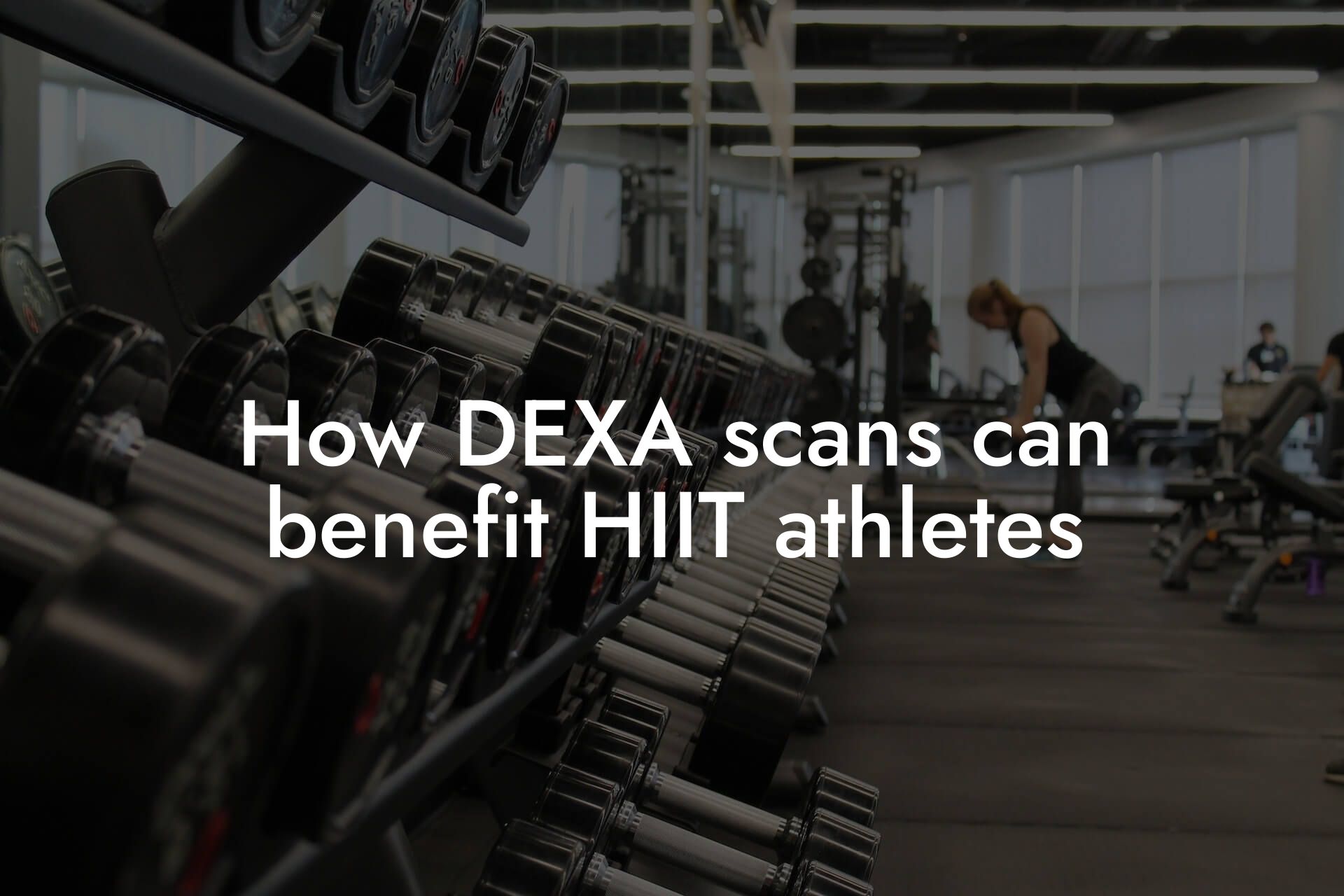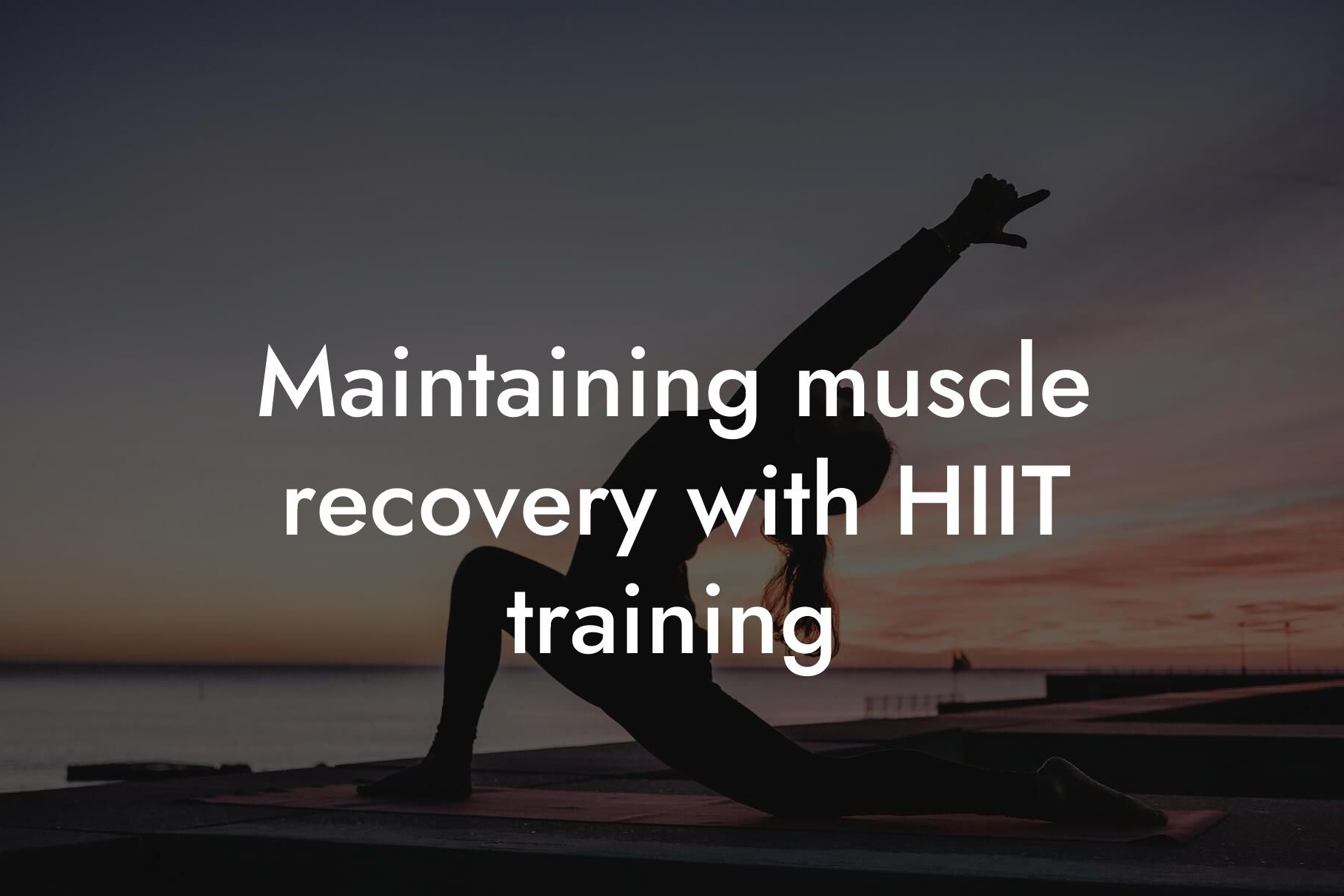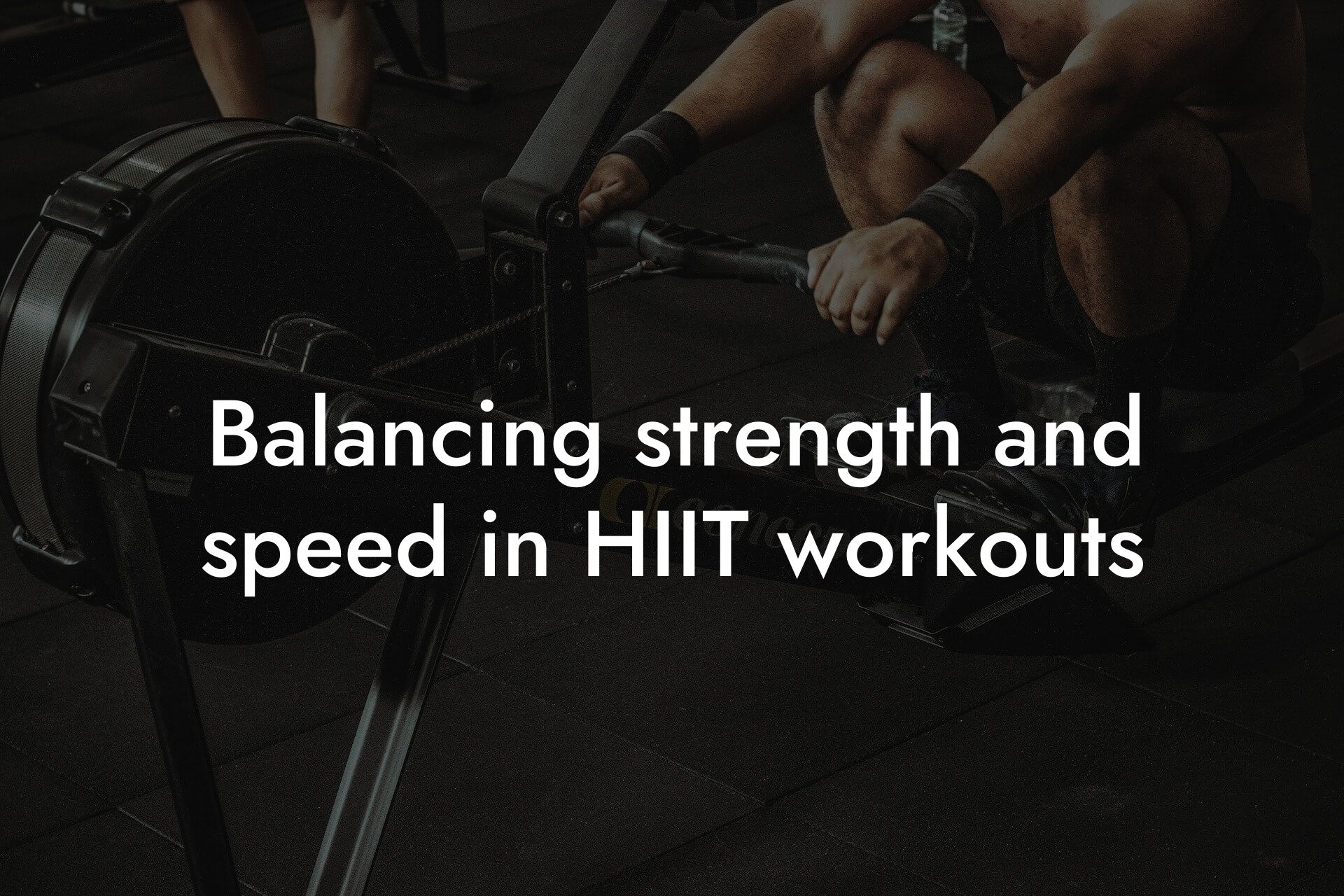High-Intensity Interval Training (HIIT) has become a popular form of exercise among fitness enthusiasts and professionals alike. Its ability to improve cardiovascular health, increase caloric burn, and enhance athletic performance has made it a staple in many workout routines. However, what many individuals may not realize is the significant impact body composition has on HIIT performance. In this article, we will delve into the importance of body composition in HIIT, how it affects performance, and what you can do to optimize your body composition for better HIIT results.
Table of Contents
What is Body Composition?
Body composition refers to the proportion of fat mass and lean mass in the body. Lean mass includes muscle tissue, bone density, and water, while fat mass consists of subcutaneous fat (under the skin) and visceral fat (around organs). A healthy body composition is characterized by a high percentage of lean mass and a low percentage of fat mass. This is particularly important for HIIT performance, as a high percentage of lean mass can improve power output, speed, and endurance.
The Impact of Body Fat on HIIT Performance
Excess body fat can significantly hinder HIIT performance. Carrying excess fat mass can lead to increased energy expenditure, reduced power output, and decreased endurance. This is because fat mass is not as metabolically active as lean mass, meaning it does not contribute to energy production during exercise. Furthermore, excess fat mass can also increase the risk of injury, particularly in high-impact exercises. A high percentage of body fat can also lead to decreased insulin sensitivity, making it more challenging to lose weight and improve overall health.
The Importance of Lean Mass in HIIT Performance
Lean mass, on the other hand, is essential for HIIT performance. Muscle tissue, in particular, plays a critical role in generating power, speed, and endurance. A high percentage of lean mass can improve muscle force production, allowing for more intense and effective HIIT workouts. Additionally, lean mass is more metabolically active than fat mass, meaning it can contribute to increased energy production during exercise. This can lead to improved performance, increased caloric burn, and enhanced athletic ability.
How Body Composition Affects HIIT Workouts
Body composition can affect HIIT workouts in several ways. For example, individuals with a high percentage of body fat may struggle to complete high-intensity exercises, such as sprints or burpees, due to decreased power output and endurance. On the other hand, individuals with a high percentage of lean mass may be able to complete these exercises with ease, resulting in improved performance and increased caloric burn. Furthermore, body composition can also affect recovery time, with individuals with a high percentage of lean mass typically recovering faster than those with a high percentage of body fat.
The Role of Bone Density in HIIT Performance
Bone density is another critical component of body composition that affects HIIT performance. High-impact exercises, such as jump squats or box jumps, can be particularly challenging for individuals with low bone density. This is because low bone density can increase the risk of injury, particularly in the hips, knees, and ankles. On the other hand, individuals with high bone density may be able to perform these exercises with ease, resulting in improved performance and reduced risk of injury.
How to Optimize Body Composition for HIIT Performance
Optimizing body composition for HIIT performance requires a combination of proper nutrition, consistent training, and regular body composition assessments. Here are some tips to help you optimize your body composition:
- Focus on whole, nutrient-dense foods, such as lean proteins, complex carbohydrates, and healthy fats.
- Incorporate resistance training exercises, such as weightlifting or bodyweight exercises, to build lean mass.
- Perform regular HIIT workouts, such as sprint intervals or burpees, to improve cardiovascular health and increase caloric burn.
- Get regular body composition assessments, such as DEXA scans, to track changes in lean mass, fat mass, and bone density.
- Aim to maintain a healthy body fat percentage, typically between 10-20% for men and 15-25% for women.
In conclusion, body composition plays a critical role in HIIT performance. A high percentage of lean mass and a low percentage of fat mass can improve power output, speed, and endurance, while a high percentage of body fat can hinder performance and increase the risk of injury. By focusing on proper nutrition, consistent training, and regular body composition assessments, you can optimize your body composition for better HIIT results. Remember, a healthy body composition is essential for achieving your fitness goals and maintaining overall health and well-being.
If you're interested in learning more about your body composition and how it affects your HIIT performance, consider scheduling a DEXA scan with Tano Performance Group. Our team of experts will provide you with a comprehensive body composition assessment, helping you optimize your body composition for better HIIT results.
Frequently Asked Questions
What is HIIT and how does it relate to body composition?
HIIT, or High-Intensity Interval Training, is a type of workout that involves short bursts of high-intensity exercise followed by brief periods of rest or low-intensity exercise. Body composition plays a crucial role in HIIT performance, as it affects an individual's ability to perform at high intensities and recover efficiently. A person's body composition, including their muscle mass, body fat percentage, and bone density, can impact their power output, endurance, and overall HIIT performance.
How does body fat percentage affect HIIT performance?
Excess body fat can negatively impact HIIT performance by increasing energy expenditure, reducing power output, and impairing endurance. Additionally, high body fat percentages can lead to increased inflammation, reduced insulin sensitivity, and decreased mitochondrial function, all of which can hinder HIIT performance. On the other hand, a leaner body composition can improve HIIT performance by increasing power output, endurance, and overall athletic ability.
What is the ideal body fat percentage for HIIT?
The ideal body fat percentage for HIIT varies depending on individual goals and fitness levels. However, for most adults, a body fat percentage between 10-15% for men and 15-20% for women is considered optimal for HIIT performance. This range allows for a balance between muscle mass and body fat, enabling individuals to perform at high intensities while maintaining endurance and recovery capabilities.
How does muscle mass impact HIIT performance?
Muscle mass plays a critical role in HIIT performance, as it directly affects power output, speed, and endurance. Individuals with higher muscle mass tend to perform better in HIIT workouts, as they can generate more force and sustain high intensities for longer periods. Additionally, muscle mass helps with recovery, as it enables the body to more efficiently remove waste products and replenish energy stores.
What is the relationship between bone density and HIIT?
Bone density is an important aspect of body composition that affects HIIT performance. High-impact HIIT exercises, such as jump squats and box jumps, can help improve bone density, particularly in older adults. This is because these exercises stimulate osteogenesis, the process by which new bone tissue is formed. Improved bone density can reduce the risk of injury and improve overall athletic performance.
Can HIIT improve body composition?
Yes, HIIT can improve body composition by increasing muscle mass, reducing body fat percentage, and improving bone density. HIIT workouts stimulate muscle growth and improve insulin sensitivity, leading to increased muscle mass and reduced body fat. Additionally, HIIT exercises can help improve bone density, particularly in older adults.
How does HIIT affect resting metabolic rate?
HIIT can increase resting metabolic rate (RMR), which is the number of calories the body burns at rest. This is because HIIT stimulates excess post-exercise oxygen consumption (EPOC), a phenomenon in which the body continues to burn calories at an elevated rate after exercise. Increased RMR can help with weight loss and improve body composition.
What is the role of genetics in HIIT performance and body composition?
Genetics play a significant role in HIIT performance and body composition. Genetic factors can influence an individual's muscle fiber type, metabolism, and body fat distribution, all of which affect HIIT performance. While genetics cannot be changed, understanding individual genetic predispositions can help tailor HIIT workouts and nutrition plans to optimize performance and body composition.
How can I measure my body composition?
There are several ways to measure body composition, including dual-energy X-ray absorptiometry (DXA), hydrostatic weighing, and skinfold measurements. DXA is a non-invasive test that uses X-rays to measure bone density and body composition. Hydrostatic weighing involves measuring body density while submerged in water. Skinfold measurements involve pinching the skin at specific points to measure subcutaneous fat. Consult with a healthcare professional to determine the best method for your individual needs.
What is the importance of nutrition in HIIT performance and body composition?
Nutrition plays a critical role in HIIT performance and body composition. A well-balanced diet that includes adequate protein, complex carbohydrates, and healthy fats can help support muscle growth, improve recovery, and optimize body composition. Additionally, proper nutrition can help regulate hormones, including insulin and testosterone, which are essential for HIIT performance and body composition.
How can I optimize my nutrition for HIIT?
To optimize nutrition for HIIT, focus on consuming a balanced diet that includes lean protein sources, complex carbohydrates, and healthy fats. Aim to eat 1.6-2.2 grams of protein per kilogram of body weight, 2-3 grams of complex carbohydrates per kilogram of body weight, and 0.5-1 gram of healthy fats per kilogram of body weight. Additionally, stay hydrated by drinking plenty of water and consider incorporating post-workout nutrition strategies, such as consuming a protein shake or meal within 30-60 minutes after exercise.
What is the role of sleep in HIIT performance and body composition?
Sleep plays a critical role in HIIT performance and body composition. During sleep, the body repairs and rebuilds muscle tissue, consolidates muscle memory, and regulates hormones, including testosterone and growth hormone. Adequate sleep is essential for recovery and adaptation, and can help improve HIIT performance and body composition. Aim for 7-9 hours of sleep per night.
How can I incorporate HIIT into my existing workout routine?
To incorporate HIIT into your existing workout routine, start by adding 1-2 HIIT sessions per week. Begin with shorter HIIT workouts (15-20 minutes) and gradually increase duration and intensity as you become more comfortable. You can also incorporate HIIT exercises into your existing strength training or cardio workouts. For example, try adding HIIT exercises like burpees or jump squats to your strength training routine.
What are some common mistakes people make when starting a HIIT program?
Common mistakes people make when starting a HIIT program include inadequate warm-up and cool-down, insufficient recovery time, and poor nutrition. It's essential to warm up properly before HIIT workouts, cool down afterwards, and allow for adequate recovery time between sessions. Additionally, poor nutrition can hinder HIIT performance and body composition. Focus on consuming a balanced diet and staying hydrated to optimize HIIT performance.
How can I track my progress in HIIT?
To track progress in HIIT, focus on measuring variables such as workout duration, intensity, and frequency. You can also track body composition metrics, such as body fat percentage, muscle mass, and bone density. Additionally, monitor your resting heart rate, heart rate variability, and sleep quality to gauge overall fitness and recovery.
What are some common injuries associated with HIIT?
Common injuries associated with HIIT include shin splints, patellofemoral pain syndrome, and muscle strains. These injuries often occur due to inadequate warm-up, poor form, and excessive intensity. To reduce the risk of injury, focus on proper form, warm up and cool down adequately, and gradually increase intensity and duration.
How can I modify HIIT for beginners?
To modify HIIT for beginners, start by reducing the intensity and duration of workouts. Begin with shorter HIIT sessions (10-15 minutes) and gradually increase duration as fitness levels improve. You can also modify exercises to reduce impact, such as replacing jump squats with bodyweight squats. Additionally, focus on proper form and technique to reduce the risk of injury.
What are some benefits of HIIT for mental health?
HIIT has several benefits for mental health, including reduced stress and anxiety, improved mood, and enhanced cognitive function. HIIT stimulates the release of endorphins, which can help improve mood and reduce stress. Additionally, HIIT can improve sleep quality, which is essential for overall mental health.
How can I incorporate HIIT into my busy schedule?
To incorporate HIIT into your busy schedule, focus on finding creative ways to fit in workouts. Try waking up earlier to fit in a morning HIIT session, or use your lunch break to fit in a quick workout. You can also try HIIT workouts at home, which can save time and eliminate the need for gym membership.
What are some common misconceptions about HIIT?
Common misconceptions about HIIT include the idea that HIIT is only for elite athletes, that HIIT is too intense for beginners, and that HIIT only improves cardiovascular fitness. However, HIIT can be modified for all fitness levels, and it can improve not only cardiovascular fitness but also muscular strength, endurance, and overall body composition.
How can I stay motivated with HIIT?
To stay motivated with HIIT, focus on setting specific, measurable, and achievable goals. Find a workout buddy or join a HIIT community to increase accountability and motivation. Additionally, track your progress, celebrate small victories, and reward yourself for reaching milestones. Staying motivated is key to achieving success with HIIT.
What are some advanced HIIT techniques?
Advanced HIIT techniques include Tabata protocol, which involves 20 seconds of all-out effort followed by 10 seconds of rest. Another advanced technique is the Wingate protocol, which involves 30 seconds of all-out effort followed by 4.5 minutes of rest. These techniques can help improve anaerobic capacity, speed, and power.
How can I incorporate strength training with HIIT?
To incorporate strength training with HIIT, try combining strength exercises with HIIT protocols. For example, try doing a set of squats followed by a 30-second HIIT interval. This can help improve muscular strength, endurance, and overall body composition. Additionally, incorporating strength training can help improve bone density and reduce the risk of injury.
Here are some related articles you might love...
- How DEXA scans can benefit HIIT athletes
- Maintaining muscle recovery with HIIT training
- Balancing strength and speed in HIIT workouts
- Improving cardiovascular endurance with HIIT
- The importance of bone density in HIIT fitness
- Strength training tips to enhance HIIT performance
- Reducing body fat for better HIIT workout results
- Preventing injuries during HIIT sessions
- Nutrition strategies for HIIT enthusiasts
Zak Faulkner
Zak Faulkner is a leading authority in the realm of physical health and body composition analysis, with over 15 years of experience helping professionals optimise their fitness and well-being. As one the experts behind Tano Performance Group, Zak has dedicated his career to providing in-depth, science-backed insights that empower clients to elevate their physical performance and overall health.
With extensive knowledge of DEXA technology, Zak specializes in delivering comprehensive body assessments that offer precise data on body fat, muscle mass, bone density, and overall physique. His expertise enables individuals to make informed decisions and achieve their fitness goals with accuracy and confidence. Zak’s approach is rooted in a deep understanding of human physiology, combined with a passion for helping clients unlock their full potential through personalised strategies.
Over the years, Zak has earned a reputation for his commitment to excellence, precision, and client-focused service. His guidance is trusted by top professionals who demand the best when it comes to their health. Whether advising on fitness programs, nutritional strategies, or long-term wellness plans, Zak Faulkner’s insights are a valuable resource for anyone serious about taking their health and fitness to the next level.
At Tano Performance Group, Zak continues to lead our Content Team revolutionising how professionals approach their physical health, offering unparalleled expertise that drives real results.




